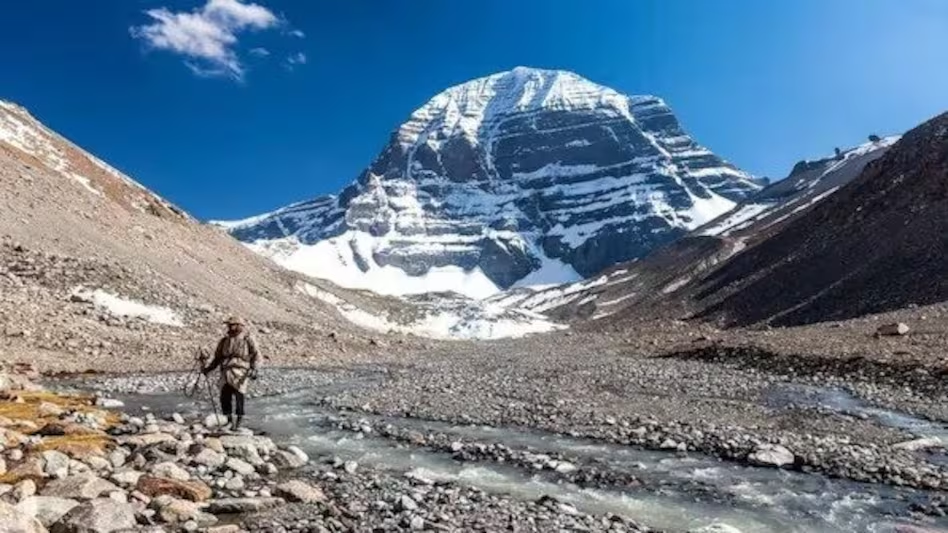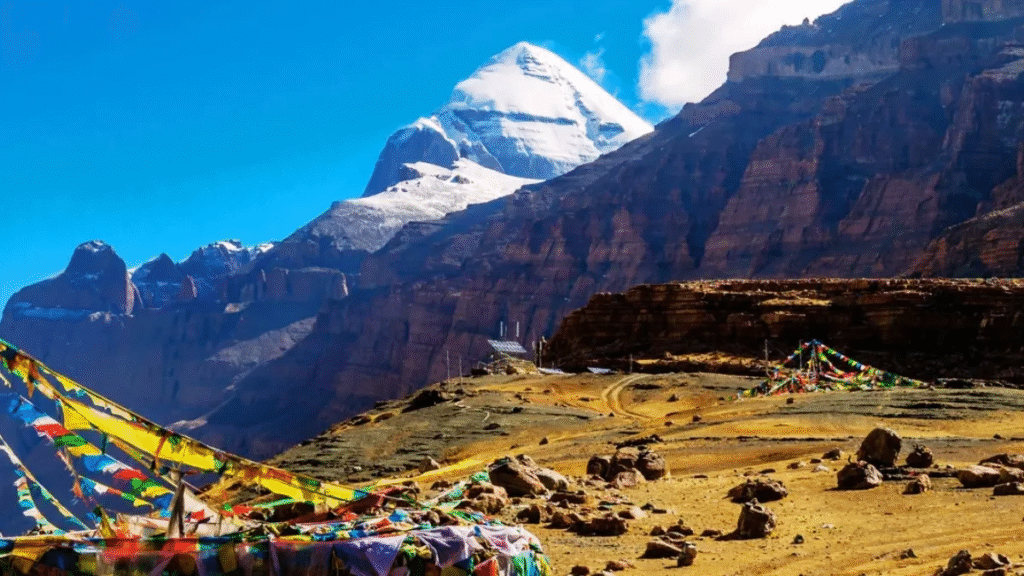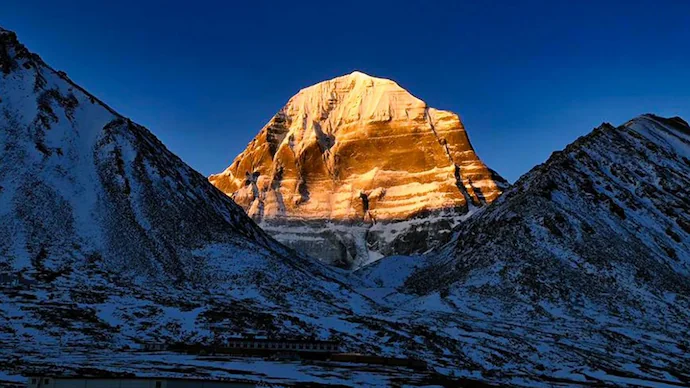
Every year, thousands of devotees from across India and beyond dream of embarking on the Kailash Mansarovar Yatra, a pilgrimage widely regarded as one of the most sacred and spiritually profound journeys on Earth. In 2025, this highly anticipated pilgrimage is set to commence in June, with 750 lucky and devoted yatris officially selected to undertake the arduous yet deeply rewarding trek to the mystical Mount Kailash and the serene Mansarovar Lake.
This pilgrimage, steeped in ancient traditions, mythology, and spirituality, transcends mere travel — it is a transformational experience that challenges both body and soul. As the preparations intensify, anticipation swells among the pilgrims, their families, and spiritual communities nationwide. The 2025 yatra promises to be a momentous occasion, marking the continuation of a timeless legacy of faith, endurance, and devotion.
The Spiritual Heart of the Himalayas: Mount Kailash and Mansarovar
Mount Kailash, rising majestically to 6,638 meters in the remote western Tibet region, holds unparalleled sanctity across multiple religions. Known as the cosmic axis, it is believed to be the earthly home of Lord Shiva, one of Hinduism’s supreme deities. According to Hindu scriptures, Lord Shiva resides here in eternal meditation, symbolizing stillness, cosmic balance, and destruction of negativity.
Mansarovar Lake, situated at the foot of Kailash, is revered as one of the purest lakes in the world. Its pristine waters are believed to have healing powers capable of purifying both mind and body. The pilgrimage involves circumambulating Kailash (a ritual known as Parikrama) and bathing in Mansarovar’s sacred waters, acts considered capable of absolving sins, improving karma, and bringing blessings.
What makes the pilgrimage unique is its interfaith significance. Buddhists honor Kailash as the abode of Demchok, a deity of supreme bliss. Jains believe it is the place where their first Tirthankara attained liberation, while the indigenous Bon religion reveres the mountain as the source of all spiritual power. This shared reverence fosters a unique sense of unity and cross-cultural respect.
Historical and Mythological Roots of the Kailash Mansarovar Yatra
The journey to Kailash and Mansarovar is deeply embedded in centuries of religious lore and mythology. Ancient texts describe Kailash as the sacred mountain around which the universe revolves. Hindu epics like the Ramayana and Mahabharata mention Kailash as a place of divine mystery and power.
Tibetan Buddhist texts narrate tales of saints and monks who attained enlightenment after meditating on Kailash. The lake Mansarovar, meaning “Lake of the Mind” or “Lake of the Spirits,” has been a pilgrimage site since ancient times, symbolizing purity and spiritual awakening.
In early history, the journey was a formidable feat, undertaken by only the most devout due to extreme climatic and geographical challenges. Pilgrims traversed snow-capped mountain passes, freezing rivers, and dangerous terrains, often taking months to complete the round trip.
The pilgrimage route also reflects political shifts. Historically inaccessible due to geopolitical tensions, the yatra was limited and sporadic until modern arrangements between India and China opened the path via Lipulekh Pass, making the journey more accessible while still demanding physical and mental resilience.
The Journey of 2025 Pilgrims: Selection and Preparation
For the 2025 yatra, the Ministry of External Affairs (MEA) received a massive number of applications from aspiring pilgrims, eager to be part of this sacred journey. However, due to logistical constraints and safety concerns, only 750 yatris have been selected this year.
The selection process was stringent. Applicants underwent rigorous medical check-ups to ensure they could handle the extreme altitudes and physical stress. Psychological preparedness and prior experience of high-altitude travel were also factors considered. The selection aimed to prioritize those with sincere devotion, physical fitness, and readiness for the spiritual and physical demands.
Once selected, pilgrims entered a phase of comprehensive preparation. Workshops and orientation sessions focused on physical conditioning, altitude sickness awareness, and cultural etiquette. Guidance on proper packing, dietary recommendations, and meditation practices helped prepare pilgrims holistically.
Logistics and Itinerary: Navigating the Sacred Path
The 2025 pilgrimage will follow the Lipulekh Pass route — a path that begins in India’s Uttarakhand state, crosses into Tibet, and leads to the sacred sites. The route is noted for its breathtaking natural beauty, including towering Himalayan peaks, glacial valleys, and pristine rivers.
From Dharchula in Uttarakhand, pilgrims will journey to the border town of Lipulekh, where they cross into Tibet after necessary customs and permit formalities. The trek continues to Darchen, the base camp for Mount Kailash, where pilgrims rest and acclimatize.
The highlight is the Parikrama — a 52-kilometer circumambulation of Kailash, undertaken over 3-4 days. The route takes pilgrims over the Dolma La pass, the highest point on the trek, testing their endurance and spiritual resolve.
After the Parikrama, pilgrims visit Mansarovar Lake. Many take a ritualistic dip in its icy waters, believed to cleanse the soul. The journey then reverses, crossing back into India via the Lipulekh Pass.
Throughout the journey, pilgrims stay at campsites with basic facilities, supported by medical teams and guides.
The Challenge of High Altitude and Weather
One of the most critical aspects of the Kailash Mansarovar Yatra is coping with high-altitude conditions. The base camp is at around 4,670 meters, while the highest pass on the Parikrama reaches about 5,630 meters. At these altitudes, oxygen levels are significantly lower, increasing the risk of altitude sickness.
Symptoms range from mild headaches and nausea to severe pulmonary or cerebral edema, which can be life-threatening. Hence, acclimatization days are built into the itinerary, allowing pilgrims to adjust gradually.

Weather conditions are unpredictable, with temperatures often dropping below freezing, especially at night. Snow, rain, and strong winds are common. Proper clothing, hydration, and nutrition are vital to maintaining health and stamina.
Pilgrims are advised to listen to medical advice, avoid alcohol and smoking, and report any symptoms early to the accompanying medical teams.
The Role of Government and Tour Operators
The Indian government plays a crucial role in facilitating the pilgrimage. Through the MEA, permissions, permits, and logistical support are coordinated, including liaison with Chinese authorities for cross-border travel.
Medical camps, emergency evacuation plans, and insurance schemes ensure safety and minimize risks. Authorities also enforce strict environmental regulations to protect the fragile Himalayan ecosystem.
Authorized tour operators are appointed to manage travel, accommodation, meals, and guidance. Their experience and professionalism are critical in ensuring a seamless journey for the yatris.
Cultural and Spiritual Experiences Along the Way
Beyond the physical journey, the yatra offers a rich tapestry of cultural immersion and spiritual reflection. Along the route, pilgrims engage in traditional rituals — chanting mantras, lighting incense, and offering prayers at shrines.
The evenings are often spent in collective meditation or storytelling sessions, where monks and guides share ancient lore and teachings. The camaraderie among yatris creates a strong sense of community, bonding strangers through shared hardship and faith.
Pilgrims witness local Tibetan culture — unique architecture, colorful prayer flags fluttering in the wind, and festivals that celebrate the mountain’s spiritual significance.
Environmental Responsibility and Sustainability
With increasing footfall, protecting the pristine environment around Kailash and Mansarovar is paramount. The yatra organizers and pilgrims are collectively responsible for minimizing their ecological footprint.
Strict guidelines prohibit littering, pollution of water bodies, and disturbance to wildlife. Waste management protocols ensure disposal and removal of garbage.
Efforts are underway to promote eco-friendly practices, including use of biodegradable materials, solar energy at campsites, and reforestation projects.
These measures ensure that the sacred landscape remains unspoiled for generations to come.
Personal Transformations: The Pilgrimage as a Journey Within
The Kailash Mansarovar Yatra is often described as a life-altering experience. The physical trials strip away everyday distractions, bringing pilgrims face-to-face with their inner selves.
Many speak of newfound clarity, spiritual awakening, and deep peace upon completing the pilgrimage. The journey encourages letting go of fears, attachments, and negativity, fostering resilience and compassion.
For some, the experience inspires lifelong dedication to spiritual practice. For others, it marks a healing process — reconciling with loss, overcoming challenges, or renewing hope.
Stories from Past Pilgrims
Pilgrims return with tales that blend awe, hardship, and divine encounters. One devotee from Maharashtra recalled the moment she reached the summit of Dolma La pass, overwhelmed by the panoramic view of snow-capped peaks and the silence that felt like the heartbeat of the universe.
Another pilgrim from Bengal shared how the shared hardships forged deep friendships with yatris from different states, creating a microcosm of India’s unity in diversity.
Such stories amplify the pilgrimage’s reputation as not just a journey across the Himalayas, but a journey into the heart.
Looking Forward: The Future of the Kailash Mansarovar Yatra
As the 2025 season unfolds, the yatra faces both opportunities and challenges. Technological advances like GPS tracking, telemedicine, and improved weather forecasting are enhancing safety.
At the same time, preserving the pilgrimage’s sacredness and ecological balance requires continued vigilance. Stakeholders from governments, religious bodies, environmental groups, and local communities must work in tandem.
Sustaining the yatra’s spiritual ethos while accommodating growing demand is a delicate balance that will shape its future.
Final Thoughts: A Journey Beyond Time and Space
The Kailash Mansarovar Yatra is a timeless quest—one that connects pilgrims to the divine, to nature, and to their innermost selves. It is an odyssey marked by faith, courage, and transformation.
For the 750 yatris chosen in 2025, the coming months will be filled with preparation, anticipation, and prayer. When they finally set foot on this sacred trail in June, they will step into a living tradition that has inspired seekers for millennia.
This pilgrimage is more than a journey; it is a living testament to human devotion, resilience, and the unending quest for transcendence.

